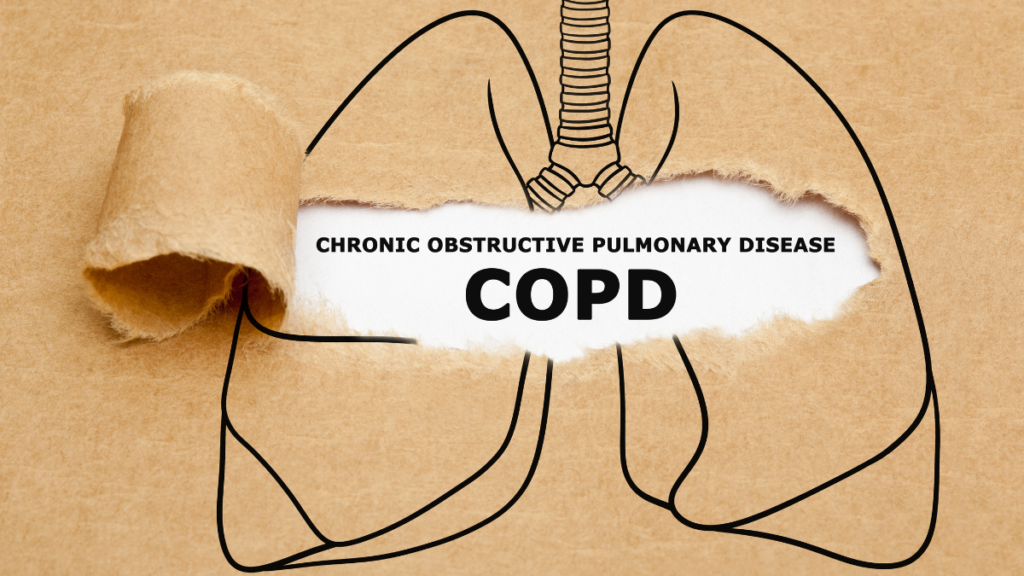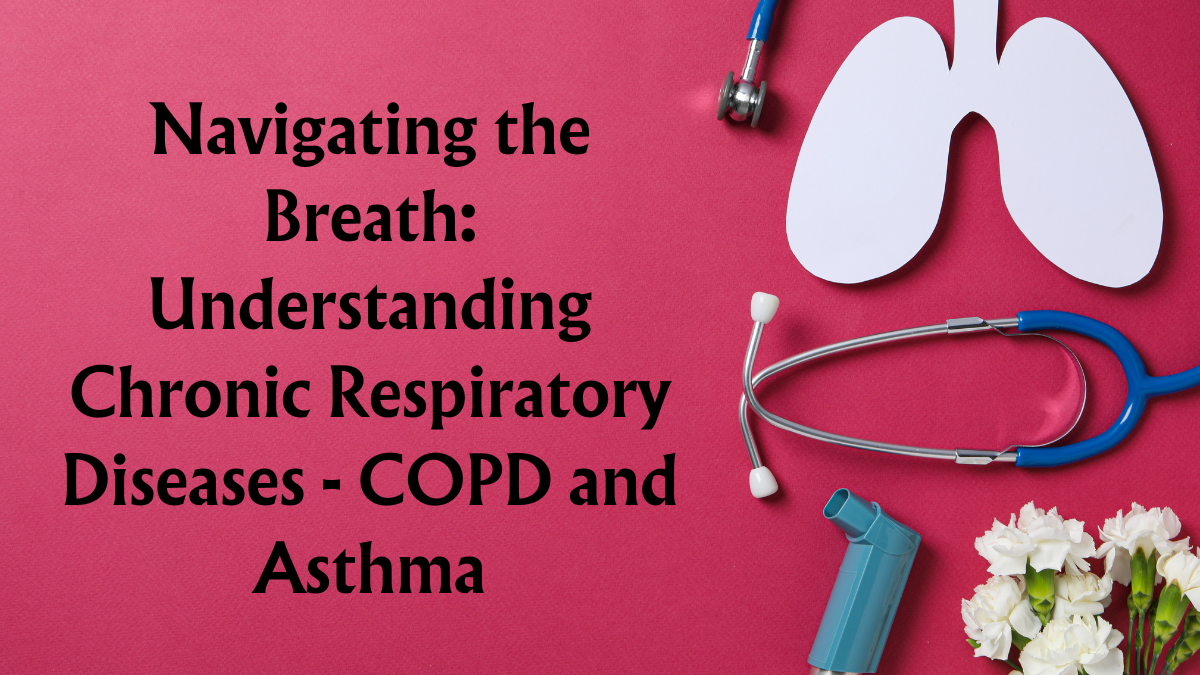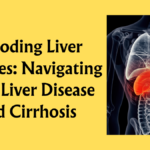Navigating the Breath: Understanding Chronic Respiratory Diseases – COPD and Asthma
Chronic Respiratory Diseases cast a shadow on the breath, affecting millions worldwide. Two prevalent conditions, Chronic Obstructive Pulmonary Disease (COPD) and Asthma, demand our attention. Let’s explore the nuances of these respiratory challenges, from their definitions to management strategies.

1. Chronic Obstructive Pulmonary Disease (COPD): The Breath Thief
– Definition: COPD is a progressive lung disease characterized by airflow limitation, making it difficult to breathe. It encompasses conditions like chronic bronchitis and emphysema.
– Causes: Smoking is the primary cause, but long-term exposure to irritants like air pollution and occupational dust can contribute.
– Symptoms: Persistent cough, shortness of breath, wheezing, and chest tightness are common. Symptoms worsen over time.
– Management: Smoking cessation is paramount. Medications, inhalers, pulmonary rehabilitation, and oxygen therapy may be part of the treatment plan.

2. Asthma: The Respiratory Rollercoaster
– Definition: Asthma is a chronic inflammatory condition of the airways, causing recurrent episodes of breathlessness, wheezing, coughing, and chest tightness.
– Causes: Genetic predisposition and environmental factors play roles. Triggers include allergens, air pollution, and respiratory infections.
– Symptoms: Variable and can range from mild to severe. Wheezing, shortness of breath, coughing, and chest tightness are hallmarks.
– Management: Long-term control with anti-inflammatory medications, quick-relief inhalers for acute symptoms, identifying and avoiding triggers, and maintaining a written asthma action plan.

Key Differentiators:
– Onset: COPD typically develops later in life, often due to cumulative exposure to risk factors. Asthma can begin at any age, and symptoms may fluctuate.
– Reversibility: COPD is generally irreversible, with lung damage accumulating over time. Asthma often shows reversible airflow obstruction, especially with prompt treatment.

Living with Chronic Respiratory Diseases: Empowering Lives
– Regular medical check-ups and adherence to prescribed medications are crucial.
– Lifestyle adjustments, including smoking cessation and environmental control, contribute significantly.
– Education on recognizing and managing exacerbations empowers individuals to take charge of their respiratory health.

Conclusion: Breathing Freely Amid Respiratory Challenges
Understanding COPD and Asthma equips individuals with the knowledge to navigate these conditions effectively. Through proactive management, lifestyle adjustments, and medical guidance, those affected can lead fulfilling lives, breathing freely despite respiratory challenges.
FAQs about Chronic Respiratory Diseases
1. Can COPD or Asthma be completely cured?
– While these conditions are generally not curable, effective management and adherence to treatment plans can significantly improve symptoms and quality of life.
2. Is there a genetic component to COPD or Asthma?
– Genetics can contribute to both conditions. Individuals with a family history may have an increased risk, but environmental factors also play significant roles.
3. Can someone with COPD or Asthma lead a normal life?
– Yes, with proper management, lifestyle adjustments, and adherence to treatment plans, individuals with COPD or Asthma can lead normal, fulfilling lives.
4. Are inhalers the only form of treatment for COPD and Asthma?
– Inhalers are commonly prescribed due to their direct delivery of medication to the airways. However, other medications, such as oral medications or nebulizers, may also be part of the treatment plan.
5. How does weather affect COPD and Asthma?
– Cold or hot and humid air, as well as temperature changes, can trigger symptoms in individuals with COPD or Asthma. It’s essential to identify personal triggers and take precautions accordingly.
https://optimalhealth.in/91-faqs-understanding-diabetic-mallets/






